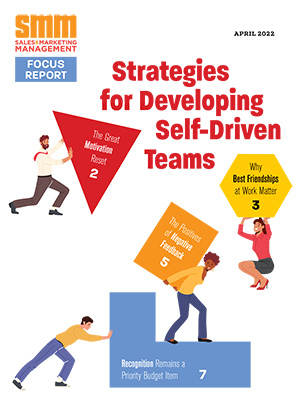Shotgun marketing can be described as a sales-driven rather than a customer-driven strategy. It focuses on sales volume rather than profit, the needs of the company rather than the needs of the customer, and more customers rather than the right customers.
The mantra of shotgun marketing? All we need is more sales volume.
Several years ago, I was asked by a large machine shop that was just breaking even to evaluate their pricing and costing systems. They suspected their salespeople did not understand the pricing procedures and weren’t building enough margin into the cost of the job.
Suspecting otherwise, I asked to see all of the jobs they had machined for the last year. The problem then became immediately obvious: The jobs were priced properly, but a large number of them resulted in losses because of too many labor hours.
It turned out this had been a bad year for the shop because they had lost some of their biggest customers; in desperation, they sent the salespeople out to bring in work to keep the employees busy. This is a classic case of shotgun marketing where, in the desperation to keep everyone employed, any job was a good job.
But in fact, many of these jobs were very different from the shop’s normal work. Some required first time set-ups; some did not fit their machine tools or employees at all. The results were losses on many jobs and a battering of the bottom line.
Shotgun marketing is a very popular sales strategy for most small and mid-size manufacturers because it is easy to do and fits the sales-driven, entrepreneurial style of these companies. The sales-driven mindset is deeply rooted in the small business culture because it is how small businesses get started.
It requires a huge leap of faith to convert shotgunners to a niche marketing (and profit) mindset, unless they clearly see the problems and have a decent cost system. To wit:
Poor measurement systems. Shotgun marketers always measure success in terms of sales volume. While sales growth is necessary, the company also needs to focus on costs and margins at all levels of the business. Over the years, I have found many shotgunners simply lack the internal systems to measure costs and margins of product lines, jobs, or customer accounts.
Consequently, they have to manage their company based on sales volume levels and “rules of thumb” management schemes, which use the gross profit shown in the monthly income statement.
Shotgunners also make the mistake of not taking the time to follow up on each completed job. By this, I mean comparing what they quoted to what really happened on the job to learn why they lost money. Such follow-up would at least teach them how (and why)to price the next similar job that comes in.
Customer information. Another big shotgun problem is selling to any customer rather than focusing on the right customer. Doing the former prevents the company from focusing on the most profitable customer or customer groups.
Shotgunners can take the first step on finding target customers by examining lost orders. Finding out why customers leave you or don’t buy from you is absolutely vital to preventing future lost orders. Tailoring products and services to specific customers is how you create value, gain a competitor advantage, and command an acceptable price and margin.
Sales costs. Shotgun marketing leads to customer dissatisfaction and increases in sales costs. Shotgunners spend a significant amount of the sales dollars redoing things like paying out warranty claims, servicing defective products, modifying new products to conform to customer needs, handling irate customers, or defending service and support policies.
When customers aren’t satisfied, they will defect…and the company will again have to pay the price of finding new customers.
Time problems. Customer dissatisfaction always results in time problems—and time is a finite resource in small manufacturing companies. The paradox of shotgun marketing is there is never enough time to focus on the right customers and to satisfy them, but there is always time and money available to fix their problems after the sale.
Nonetheless, fixing customer problems after the sale is very time-consuming, and can escalate to the point where it affects day-to-day operations and other departments. This continuous “fire drill” automatically leads to customer dissatisfaction and employee turnover if the problems become overwhelming.
Planning. One of the advantages of shotgunning is that the marketing plan is simple and verbal, because the focus is selling to any customer and the measurement is sales volume. When there is no marketing plan that lists market niches by SIC code, or defines the best customer profiles, or generates leads for the sales rep, then the result is lack of direction for that rep.
Simple marketing planning is being able to know where to go before you go there. In other words, you have to develop a list of prospects and then qualify them before investing the cost of a personal sales call.
If your objective is to find new customers and markets, you need a plan that assesses current customers (in terms of profitability), reviews competitor strengths and weaknesses to determine competitive advantage, and chooses the market niches with the best long-term potential. The plan should also include descriptions of the new marketing strategies and a Proforma forecast.
Note: Still uncertain as to whether your salespeople are employing shotgun selling techniques? I have put together a 23-question checklist that will prove invaluable in making this determination. Just e-mail me at mpcmgt@att.net to request your copy.
Mike Collins is the author of “Saving American Manufacturing” and its companion book, the “Growth Planning Handbook for Manufacturers.” To learn more about the author or these titles, visit www.mpcmgt.com.
Manufacturer’s Corner: The Pitfalls of Shotgun Marketing
Get our newsletter and digital focus reports

Stay current on learning and development trends, best practices, research, new products and technologies, case studies and much more.

